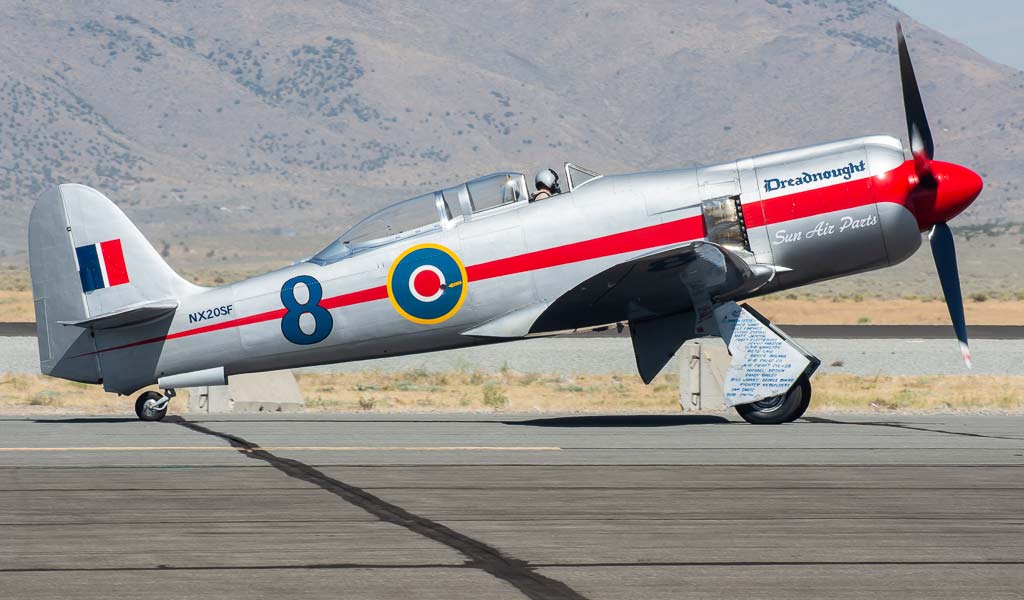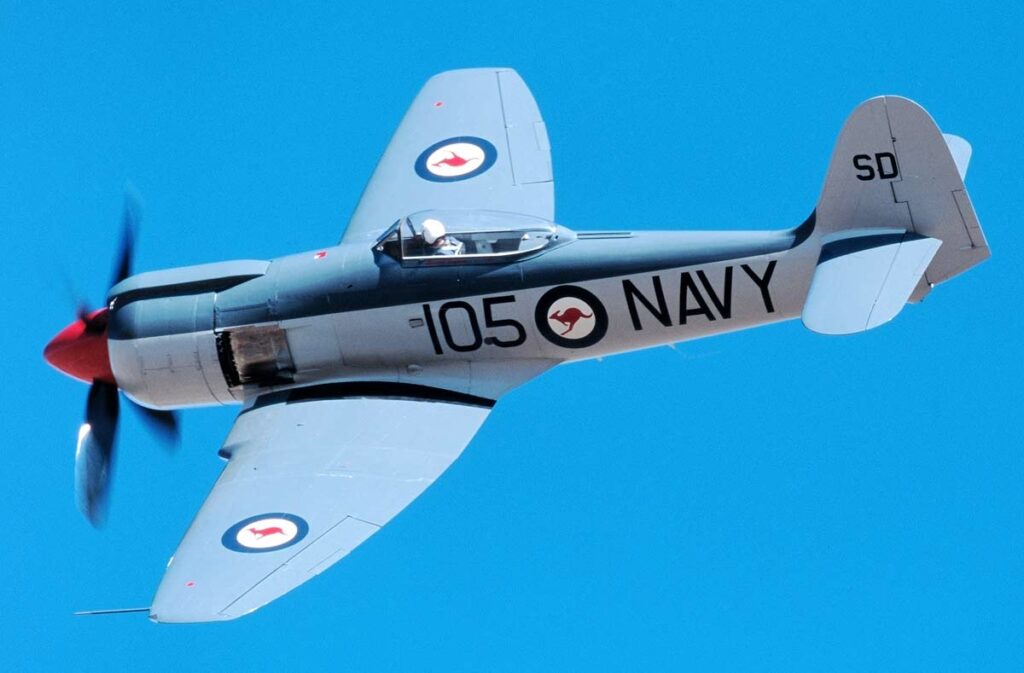The Hawker Sea Fury, a British carrier-based fighter-bomber, known for its powerful Bristol Centaurus engine, robust design, and post-WWII era service.
The Hawker Sea Fury was a prominent British fighter aircraft of the late WWII era, renowned for its performance and durability, especially in carrier operations.

History of the Development of the Hawker Sea Fury:
Developed during World War II, the Sea Fury emerged from the need for a powerful, carrier-based fighter-bomber. Hawker Aircraft, under Sydney Camm’s leadership, initiated the design in response to the Royal Navy’s requirements for a robust, high-performance aircraft capable of withstanding the rigors of carrier operations.
The program was launched to replace older aircraft like the Sea Hurricane and the Fairey Firefly. The first prototype flew in February 1945. The Sea Fury did not have a specific NATO nickname, as it was primarily operated by the Royal Navy before the standard NATO naming convention was established.
Design of the Hawker Sea Fury:
The Sea Fury’s design was an evolution of Hawker’s successful Tempest fighter. It had a wingspan of 11.7 meters (38 feet 4.75 inches) and a length of 10.6 meters (34 feet 8 inches). The aircraft was powered by a Bristol Centaurus radial engine, one of the most powerful piston engines of the time, producing around 2,480 horsepower.
It featured a robust airframe suitable for carrier landings, a tailwheel undercarriage, and folding wings for easier storage on aircraft carriers. The Sea Fury’s design allowed for excellent aerodynamic efficiency and high-speed performance.
However, as a late piston-engine design, it faced the inherent limitations of propeller-driven aircraft in an era increasingly dominated by jet-powered fighters.
Performance of the Hawker Sea Fury:
In performance terms, the Sea Fury was exceptional. It could reach a top speed of 740 km/h (460 mph) and had a service ceiling of over 10,900 meters (35,800 feet). Its range was approximately 1,127 kilometers (700 miles) on internal fuel.
Compared to contemporaries like the American F4U Corsair and the Japanese Mitsubishi A6M Zero, the Sea Fury was superior in terms of speed and maneuverability, especially at low altitudes.

Military Use and Combat of the Hawker Sea Fury:
The Sea Fury saw significant service with the Royal Navy in the post-WWII period, particularly during the Korean War. It was armed with four 20 mm Hispano cannons and could carry rockets and bombs, making it an effective fighter-bomber.
In Korea, Sea Furies conducted ground-attack missions and air-to-air combat, notably engaging North Korean Yak-9s and MiG-15 jet fighters. Its success in these encounters demonstrated the Sea Fury’s capability even against more modern jet aircraft.
The aircraft was also operated by several other nations, including Australia and Canada. Over time, the Sea Fury was phased out in favor of jet aircraft, with the last operational models serving into the 1950s and 1960s.
The Hawker Sea Fury represents a pinnacle in piston-engine fighter design, demonstrating exceptional performance and versatility in both air-to-air and air-to-ground roles. Its service during a transitional period in aviation history highlights both its capabilities and the end of an era for piston-engine fighters in military aviation. The Sea Fury’s legacy endures, particularly through its impressive service record and its role in the Korean War.
Back to the Warbirds section.